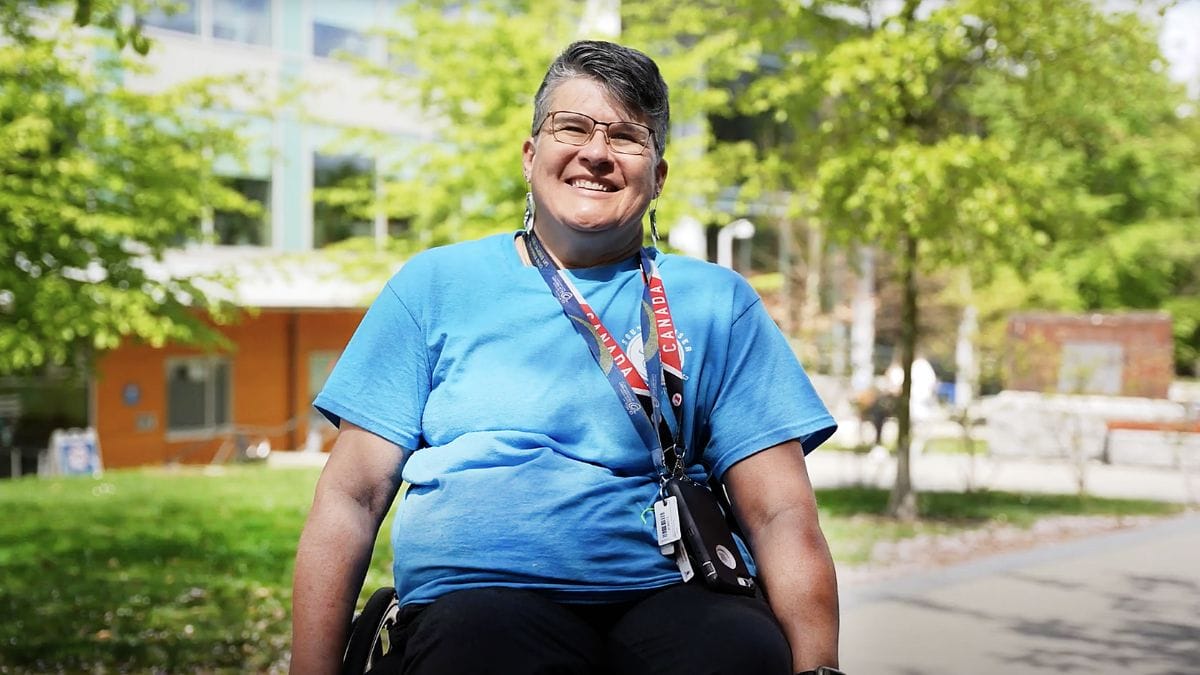
If you’re one of the more than 90% of people with SCI who have a neurogenic bladder, then you probably read the headline of this article and thought, “What took you so long?”
Neurogenic bladder is the term for what happens when your nervous system affects the way your bladder works. For people with SCI, having a neurogenic bladder usually means that your brain can’t communicate with the parts of your body needed for voluntary bladder control.
Most people with neurogenic bladder rely on intermittent catheterization for bladder management. Intermittent catheterization, or self-catheterization, involves using a catheter to drain urine from your bladder at regular intervals throughout the day. It’s a way to “manually” empty your bladder when the signals from your brain can’t trigger your pelvic floor muscles to do it on their own.
Like many conditions associated with SCI, the costs of neurogenic bladder are significant. Neurogenic bladder impacts health-related quality of life and often limits the lifestyle choices of people with SCI. Limited space, unhygienic conditions, and inaccessible washrooms are just a few examples of the challenges that people who use intermittent catheters face. As a result, people who use intermittent catheters for bladder management often avoid social situations in favour of staying home, contributing to social isolation and increasing risk of depression.
Complications of neurogenic bladder, such as urinary tract infections (UTIs), can also take a toll on patients’ physical and mental health, while also resulting in significant economic costs.
“In Canada, it is estimated that the annual economic burden associated with care for people with SCI is about $2.6 billion, and one of the most common complications of SCI is a neurogenic bladder and associated UTIs,” explains Dr. Andrei Krassioukov, a clinician-scientist at the International Collaboration on Repair Discoveries (ICORD), GF Strong Rehabilitation Centre, and the Division of Physical Medicine and Rehabilitation at the University of British Columbia. “In fact, based on studies that my team conducted in BC, we estimated that an emergency room visit for a person with SCI with a UTI costs $5000 to $100,000, just for one visit.”
Options for bladder management, such as the type of catheters available, can play a serious role in the size of these costs—for both the patient and the healthcare system.

Hydrophilic single use catheters are currently regarded as the “gold standard” of care for bladder management. Single use catheters, as the name implies, are intended to be disposed of after each use. Compared to reusable catheters, which are cleaned and reused multiple times, single use catheters are associated with a lower risk of developing UTIs. But in many places, including parts of Canada, limited access to catheters or the financial cost of purchasing catheters for only one use means that, for some people, reuse is the only option.
The significant economic and health-related costs associated with neurogenic bladder and UTIs are what prompted Dr. Krassioukov and a team of international experts to work together on a solution. Their recently published position paper, ‘Intermittent catheterization: individuals’ rights, accessibility and environmental concerns,’ reflects the culmination of their work.
The authors of the paper represent a Global Advisory Board focused on UTIs and catheterization for Coloplast, a company that develops ostomy, continence, urology, wound, and skin care products and services for people with intimate healthcare needs. The advisory board is made up of physicians with expertise in urology and physiatry (physical medicine and rehabilitation) from Canada, Belgium, Switzerland, France, South Africa, and the Netherlands. The group meets once or twice every year to provide advice to Coloplast.
Over the past year and a half, the group has been trying to answer some important questions, says Dr. Krassioukov. Questions like, ‘why are some people with SCI coming back to the ER with UTIs multiple times per year?’ And ‘what can we do to ensure that single use catheters are made accessible to people who rely on intermittent catheterization around the world?’
“But we knew we couldn’t rely solely on medical knowledge to answer these questions,” explains Dr. Krassioukov. “We needed the perspectives of disability organizations and people with lived experience to better understand the reality of catheterization around the world, and what could be done to improve it.”
So, with the support of Coloplast, the advisory board brought together representatives from SCI organizations, including SCI BC, SCI Ontario, and equivalent organizations in other countries, for a series of virtual meetings to discuss ways of improving bladder management on a global scale.
The position paper that resulted from these discussions highlights persisting barriers to the rights of people with neurogenic bladder to access the best evidence-based standard of care for bladder management, as well as their right to adequate and comfortable facilities when performing intermittent catheterization.
For example, some countries are legally obligated to provide the highest attainable standard of care for intermittent catheterization. Elsewhere, including here in BC, barriers related to funding limit the type and number of catheters available, and in some cases, mean that users cannot afford their preferred type of catheter. Policies around reimbursement for single use catheters can further compound the issue of affordability. Lack of education and awareness around the types of catheters and the risk of UTIs, as well as the requirements of intermittent catheterization, are contributors to these issues, particularly among healthcare professionals and reimbursement bodies (for example, government programs and insurance providers).
“Surprisingly, in Canada, we still don’t have unified implementation of single use catheterization,” says Dr. Krassioukov. “There are totally different rules and laws about single use catheters from province to province. For example, in Ontario, Manitoba, and British Columbia, there is no universal coverage for people with SCI. If you’re injured at work, WCB [Worker’s Compensation Board/WorkSafeBC] will cover all of your catheters. Or if you have third party health insurance, you might have coverage. But the majority of people, particularly people with low income, have no coverage. It’s a totally different situation in Saskatchewan, where all medical devices for people with SCI, including catheters, are billed directly to the government.”
Another challenge for people who rely on single use catheters is the growing concern about the impact of single use plastics on the environment. This is a challenge that people with SCI are facing on multiple fronts, with plastic items that allow them to live safely and independently, from plastic straws to pre-packaged foods, on the chopping block.
“I do appreciate that medical devices such as catheters are made from materials which are not easily disintegrated in the environment. But I believe it’s a question to the industry: Can we design a catheter that will be environmentally friendly? Can we find materials that could be disintegrated easily, or could we have some kind of collecting system to reduce waste and reuse the materials for something else?” asks Dr. Krassioukov.
“The frequency of UTIs and cost of care for people with SCI to treat UTIs, in my opinion, totally overshadows our concerns about environment. We have to prioritize the health of the people, and evidence demonstrates that reusable catheters will increase frequency of UTIs,” he adds.
In addition to shining a spotlight on the barriers to optimal bladder care around the world, the position paper also calls out strategies to address them. For example, medical societies can strive to educate specialists by providing up-to-date information on current research focused on products and technologies used in bladder management. Likewise, interdisciplinary healthcare professionals can collaborate with reimbursement bodies to provide education around the challenges faced by individuals with neurogenic bladder dysfunction. Specialist nurses, who often have the most contact with people who experience neurogenic bladder, could also be the target of investments in training and education.
Collaboration with the SCI community, like the group that put forward the position paper, is also needed to ensure that solutions are realistic and relevant for the people that they will impact.
“There is a discrepancy in how physicians and scientists want to help people with SCI and what people with SCI are asking for. That’s why we need ongoing dialog and collaboration between clinician scientists and people with SCI,” reflects Dr. Krassioukov.
The paper concludes that “access to intermittent catheterization must not be limited to those who can afford it, and if reuse is the only option, we need reusable solutions that minimize negative effects on health and safety.”
But without a unified system to make single use catheters available to the people who need them, Canadians who live with neurogenic bladder do not always have this right.
“That’s why we need to push the Ministry of Health,” says Dr. Krassioukov. “We need to push government further and further and further with the evidence that we have.”
We agree, which is why we are collaborating with other organizations to build a case for full intermittent catheter coverage here in BC. In addition, we have started holding focus groups for SCI BC peers to share their challenges in accessing funding and the right catheters for them, and why and how the province should provide full coverage for catheters. A report on the first set of focus groups will be available soon and more sessions will be scheduled in the coming months. Stay tuned as your voices will be critical for the movement to end what amounts to an unfair taxation on urination.
This article originally appeared in the Fall 2024 issue of The Spin. Read more stories from this issue, including:
- Peer advocacy
- Air travel
- Entrepreneurship
And more!





